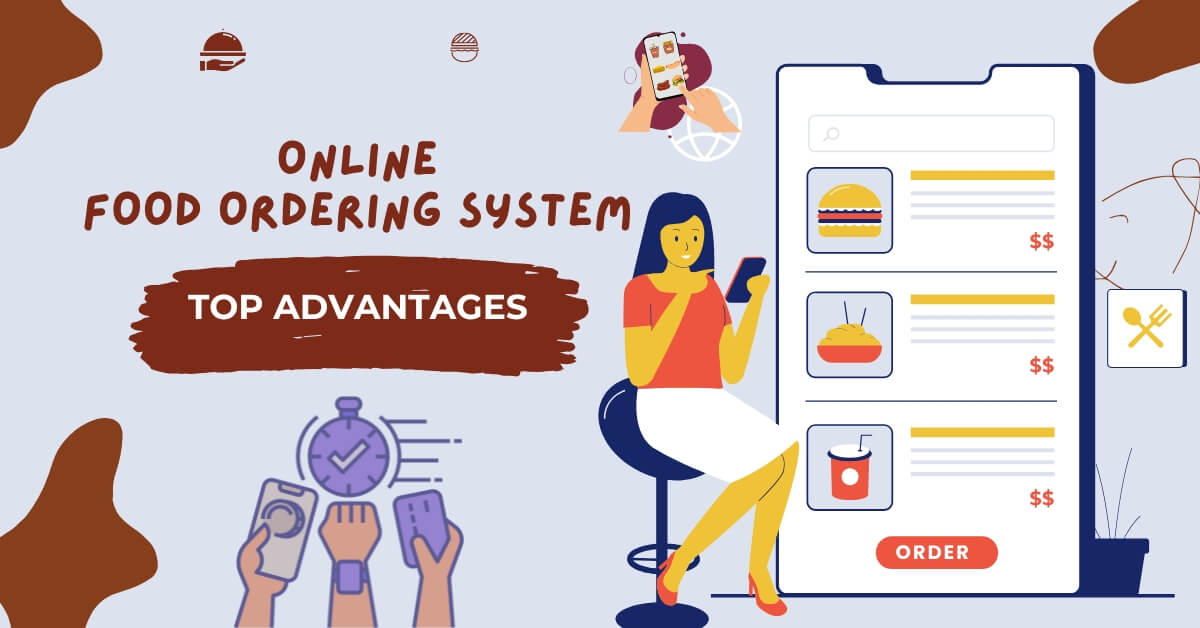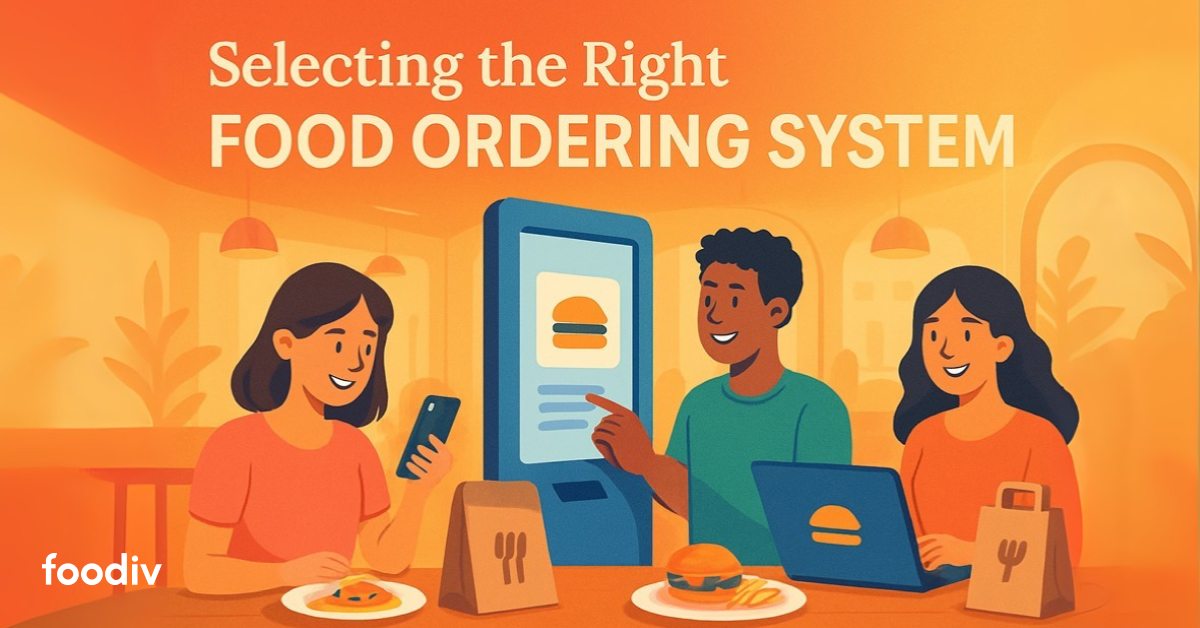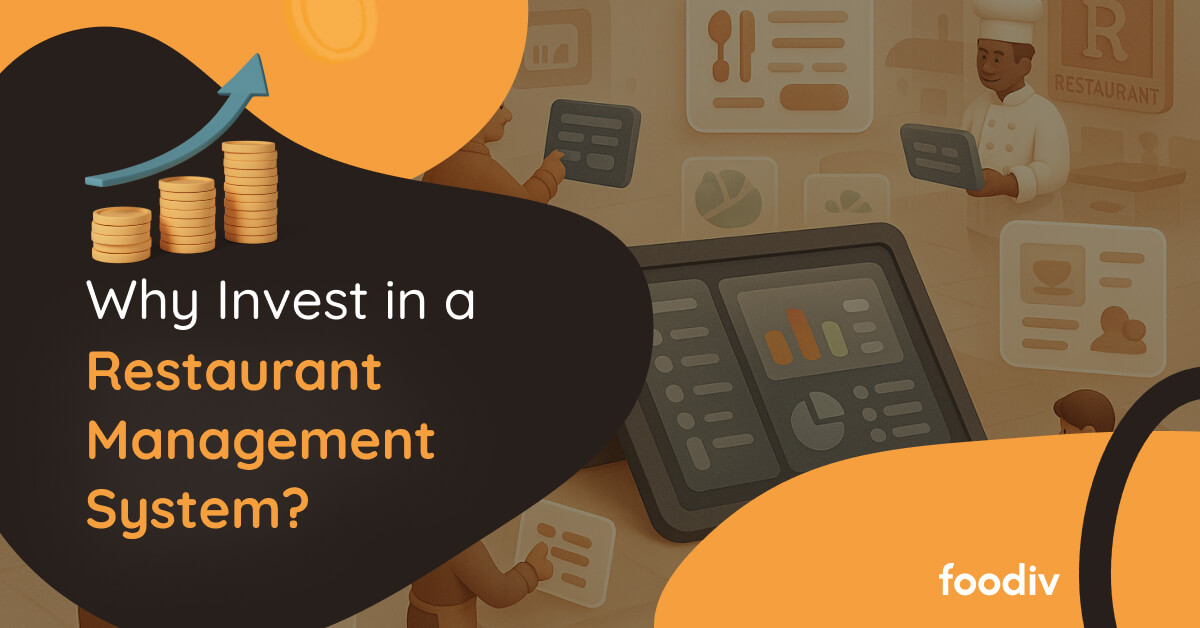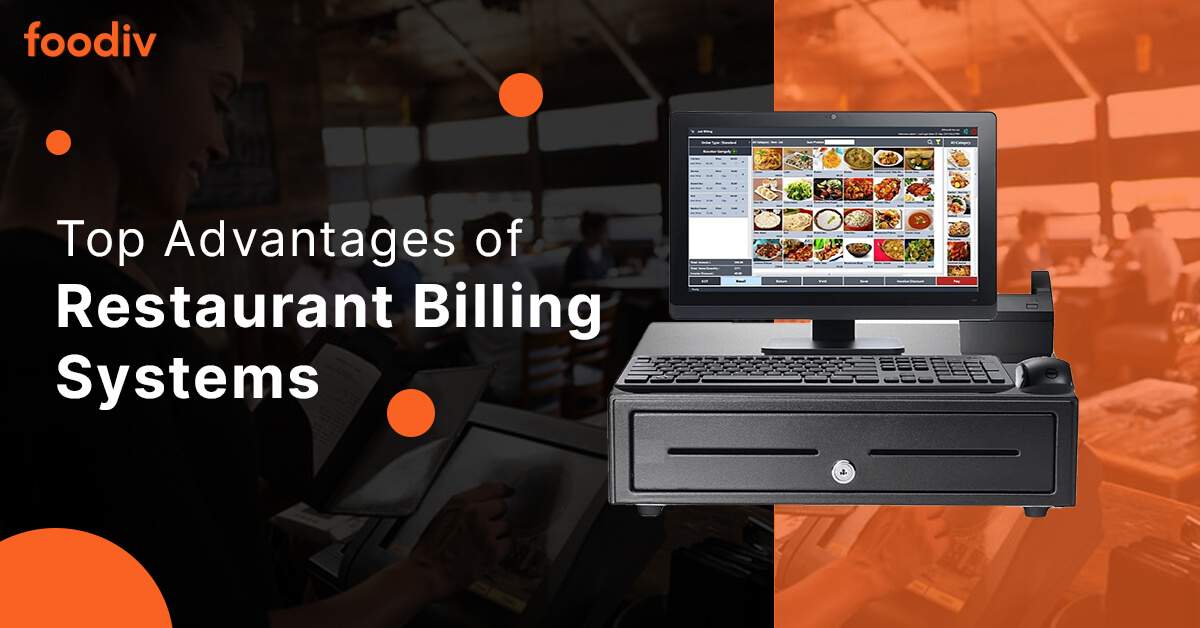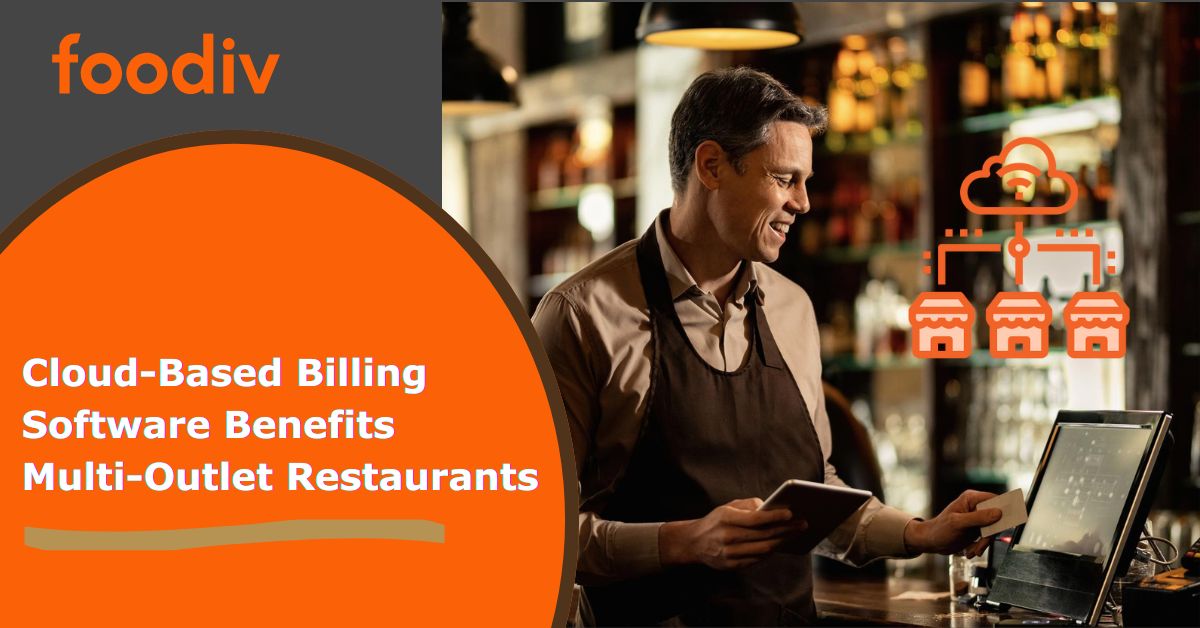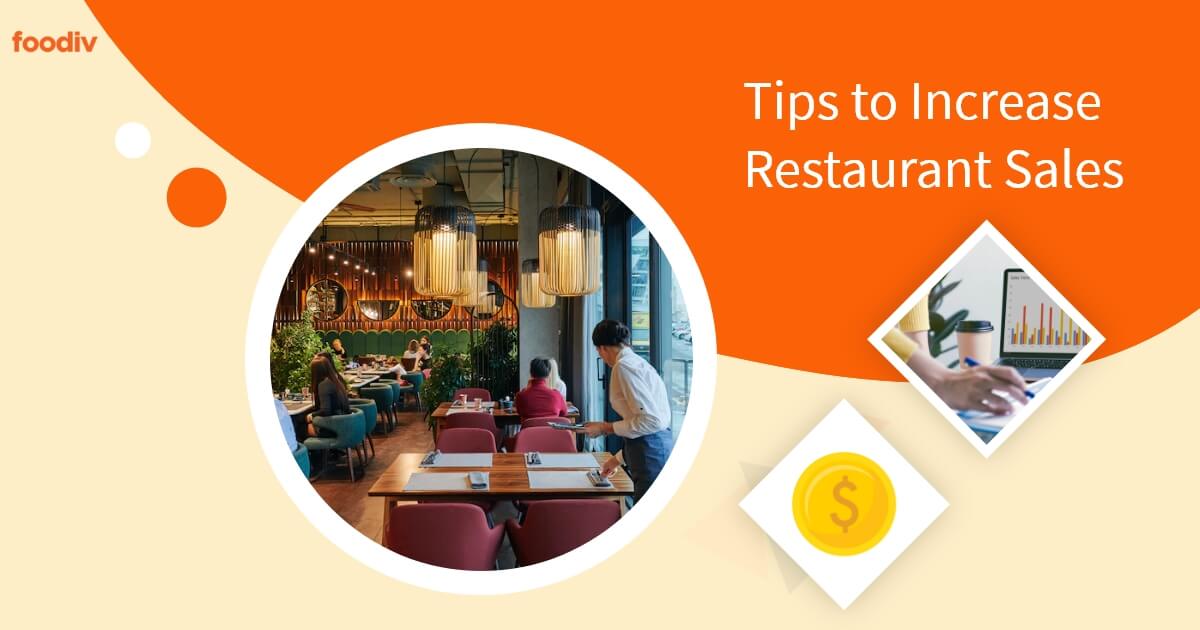
Running a successful restaurant requires more than serving quality food. In an increasingly competitive and dynamic market, restaurant owners must understand how to adapt to changing customer expectations, emerging technologies, and shifting economic conditions. While operational challenges are unavoidable, there are clear, actionable strategies that can help improve your restaurant sales, streamline service, and build long-term customer loyalty.
This guide offers a practical and strategic approach to increasing restaurant sales in 2025. Each section focuses on core areas where restaurants can take immediate and measurable action—from improving takeout and delivery systems to enhancing menu performance and customer engagement.
Whether you manage a single-location eatery, a growing chain, or a cloud kitchen, the strategies presented here are designed to help you make informed decisions, attract more customers, and grow your revenue in a sustainable way.
What Helps Restaurant Sales in 2025?
Before exploring strategies to improve restaurant sales, it is essential to understand the key factors that influence customer demand and operational performance. Restaurant owners often focus solely on increasing promotions or expanding menus without addressing the underlying conditions that impact their sales. Recognizing these factors allows for more effective planning and sustainable growth.
Seasonal and Geographic Location
Consumer behavior in the restaurant industry varies significantly depending on the season and the location of the establishment. For instance, coastal restaurants may see higher traffic during the summer, while those in colder regions might experience peak business during the holiday season. Seasonal events, local festivals, and even weather conditions play a substantial role in determining daily or monthly sales patterns. In the United States, occasions like Mother’s Day and Valentine’s Day continue to rank among the most popular for dining out, often resulting in sharp increases in both reservations and revenue.
Quality of Service
The quality of service remains one of the most influential factors affecting restaurant sales. Diners expect a seamless and pleasant experience whether they are visiting a fast-casual restaurant, a quick-service outlet, or a fine dining establishment. Prompt service, courteous staff, and consistent food quality contribute to customer satisfaction and repeat business. On the other hand, poor service can lead to negative reviews and reduced customer retention, especially in an era where online ratings significantly influence public perception.
Menu Pricing and Structure
The cost and presentation of a restaurant’s menu directly affect consumer decisions. With easy access to digital menus and price comparison tools, customers often browse online before choosing where to dine or place an order. Restaurants must regularly evaluate and update their menu to ensure it remains relevant, competitive, and profitable. Menus should offer a clear structure, reflect seasonal or trending items, and be priced appropriately to balance customer expectations with profit margins.
Branding and Online Experience
Digital presence plays a crucial role in shaping customer impressions. Research shows that a large percentage of diners review a restaurant’s website and online content before making a decision. Restaurant branding strategies such as an intuitive website, appealing food photography, and accurate business information contribute to the overall customer experience even before the first interaction. A strong brand identity supported by a cohesive digital experience increases trust and encourages online orders and in-person visits alike.
Proven Strategies to Boost Restaurant Sales and Revenue in 2025
Increase Revenue Through Off-Premise Dining Services
Off-premise dining has become a key driver of restaurant growth. Providing customers with convenient ordering options not only improves satisfaction but also opens new revenue channels beyond the physical dining space. Offering structured and reliable off-premise services such as takeout, delivery, and curbside pickup can help restaurants capture more orders and increase repeat business.
Offer Structured and Simplified Takeout Options
Takeout remains one of the most effective ways to serve customers who prefer to enjoy meals at home or on the go. To maximize the benefits of this service, restaurants should create a separate menu tailored specifically for takeout. This version should include items that are easy to prepare, package securely, and maintain their quality during short travel times.
Simplifying the menu reduces the chance of operational errors and improves kitchen efficiency. Additionally, clear labeling, accurate order tracking, and consistent packaging can enhance the customer experience and encourage future orders.
Expand Customer Reach with Delivery Services
Delivery service provides direct access to a wider customer base, including those who may not visit in person but still wish to enjoy the restaurant offerings. Restaurants can manage delivery operations internally or through third-party platforms. Each approach has distinct advantages.
Managing delivery in-house offers full control over the service experience, brand presentation, and customer interaction. On the other hand, partnering with established delivery apps can help reach new customers more quickly, especially in competitive urban markets.
To maintain profitability, restaurants should evaluate delivery costs, fees, and logistics regularly. Offering special promotions or bundling items can increase average order value and offset delivery expenses.
Increase Order Volume with Curbside Pickup
Curbside pickup is an efficient and customer-friendly option that allows diners to receive their food without leaving their vehicles. This service is especially valuable for families, professionals on the move, and customers seeking a contact-free experience.
Implementing curbside service requires clear signage, designated pickup zones, and trained staff to manage order handoffs. Accuracy and speed are critical. Using a mobile ordering system that allows customers to notify the restaurant upon arrival can streamline the process and reduce wait times.
By offering these off-premise dining options, restaurants can adapt to changing customer expectations and create new opportunities for consistent, scalable sales.
Optimize Your Menu to Maximize Profits
An effective menu does more than list available dishes. It functions as a strategic tool that directly influences customer decisions, order value, and overall profitability. A well-structured and data-informed menu encourages higher spending while aligning with operational capabilities.
Evaluate Menu Performance Regularly
Restaurants should conduct regular performance reviews of all menu items. This includes analyzing sales data, preparation time, food costs, and customer feedback. Items that are popular but generate low margins may need to be adjusted, repriced, or replaced with more profitable alternatives. Eliminating underperforming items also streamlines kitchen operations and reduces waste.
Highlight High-Margin Items
The placement and presentation of menu items influence customer choices. Position high-margin dishes where they are more likely to be noticed, such as at the top right corner of a printed or digital menu. Use descriptive language to emphasize value and appeal. Strategic layout, including the use of boxes or visual cues, can guide guests toward items that contribute more to revenue.
Keep the Menu Focused and Adaptable
A concise and clearly organized menu makes decision-making easier for customers and improves kitchen efficiency. Offering fewer, well-executed options can lead to better food quality and faster service. Seasonal updates, limited-time offerings, and customer feedback should inform periodic adjustments.
By refining the menu and aligning it with business goals, restaurants can increase average ticket size, reduce operational strain, and maintain a consistent brand identity.
Grow Your Sales with a Powerful Online Food Ordering System
An online food ordering system is no longer an optional feature for restaurants. It has become a core sales channel that directly supports convenience, accessibility, and customer satisfaction. A well-integrated food ordering system enhances efficiency, improves the customer journey, and increases order volume without increasing staff workload.
Make Ordering Easy on All Devices
Customers expect to place orders quickly and seamlessly, whether they are using a smartphone, tablet, or computer. Your online ordering platform should be responsive and compatible with all major devices. Clear navigation, intuitive design, and minimal steps from menu selection to checkout are essential to reduce drop-offs and increase order completion rates.
One of the most practical innovations supporting this expectation is the use of digital menus accessible through QR codes. The benefits of QR code menu for restaurant are significant. QR code menus allow customers to view offerings, place orders, and make payments directly from their own devices. This improves ordering speed, enhances the dine-in experience, and reduces the need for physical menus or unnecessary contact.
By ensuring your ordering system is mobile-friendly and supported by features such as QR code integration, you make the process more efficient and convenient for guests. This not only leads to greater customer satisfaction but also contributes to higher sales and better service flow.
Integrate Ordering Across Website, App, and QR Code
Restaurants should offer multiple access points for customers to place orders. This includes website ordering, mobile app ordering, and QR code menus. Guests dining in can use QR codes to browse the menu and place their orders without waiting for staff assistance. This feature increases table efficiency and enhances the dining experience.
Mobile app integration allows loyal customers to reorder their favorites, receive updates on their orders, and engage with loyalty programs. A consistent and unified experience across platforms strengthens your brand presence and encourages repeat business.
Include Features That Support Customer Preferences
An effective online ordering system should offer flexible options that meet different customer needs. These may include order scheduling, contactless payments, real-time status updates, and the ability to customize items. Additional features such as saved order history, phone support, and user accounts can make the ordering process more personalized and efficient.
Restaurants that invest in a well-designed ordering system benefit from higher customer satisfaction, stronger digital visibility, and increased sales. This system should work as an extension of your restaurant, providing the same level of service and quality that customers expect in person.
Strengthen Your Mobile Presence to Capture On-the-Go Diners
In today’s market, a restaurant online presence must be optimized for mobile users. Most customers now search for dining options, place orders, and read reviews on their phones. A mobile-friendly experience not only increases customer engagement but also plays a direct role in converting online traffic into orders.
Optimize Your Website for Mobile Devices
A restaurant website that does not function properly on mobile devices will likely lead to lost opportunities. Ensure that your site loads quickly, displays clearly on smaller screens, and allows users to navigate the menu, find location details, and place orders without difficulty. Responsive design and simplified layouts enhance usability and improve customer satisfaction.
Claim and Maintain Your Google Business Profile
Many potential customers rely on search engines to discover new places to eat. Maintaining an accurate and complete Google Business Profile helps your restaurant appear in local search results, maps, and voice searches. Include updated contact information, hours of operation, menus, and photos. Encourage satisfied customers to leave reviews, as strong ratings can significantly increase visibility.
Use Social Media to Drive Mobile Engagement
Active social media accounts extend your reach and allow you to interact with current and potential customers. Share menu updates, limited-time offers, and behind-the-scenes content to build interest and loyalty. Platforms like Instagram and Facebook also support direct links to ordering pages, which can streamline the path from discovery to purchase.
By focusing on mobile optimization, restaurants meet customers where they already are. A strong mobile presence improves user experience, strengthens digital visibility, and supports consistent growth in online orders.
Stay Ahead by Following 2025 Restaurant Trends
Remaining competitive in the restaurant industry requires constant adaptation to changing market trends. In 2025, customer preferences are shaped by technology, social awareness, and a growing desire for unique experiences. Restaurant owners who stay informed and act on these trends are more likely to attract new customers and retain existing ones.
Monitor Industry Developments
Regularly reviewing industry publications, data reports, and case studies can help identify emerging trends that are relevant to your business. Topics such as sustainability, plant-based menu expansion, and personalized dining experiences continue to gain attention. Understanding these shifts allows restaurants to adjust their operations and offerings in ways that align with customer expectations.
Follow Consumer Behavior on Social Media
Social media platforms are a valuable source of insights into what customers want. Trends often emerge online before they appear in traditional market data. By observing popular food content, customer reviews, and competitor strategies, restaurant owners can identify changes in demand and act quickly to stay relevant.
Connect With Peers and Local Communities
Networking with other restaurant owners, suppliers, and industry professionals offers opportunities to exchange knowledge and explore collaborative ideas. Local partnerships, seasonal menu sourcing, and community-driven events are increasingly favored by consumers who value authenticity and social responsibility.
Staying ahead of restaurant trends does not require large-scale innovation but a willingness to listen, learn, and evolve. Those who respond thoughtfully to market signals are better positioned to deliver experiences that resonate with today’s diners.
Build Customer Loyalty with Retention Programs that Work
Attracting new customers is important, but long-term success in the restaurant industry depends heavily on retaining existing ones. Returning guests are more likely to spend more, recommend the business to others, and support it during seasonal fluctuations. Well-structured customer retention strategies help build trust and foster loyalty, which directly contributes to higher and more consistent sales.
Offer a Meaningful Loyalty Program
A loyalty program encourages repeat visits by offering incentives for continued engagement. These programs can be as simple as earning points per visit or as advanced as tiered systems that provide greater rewards with increased frequency. The key is to make the benefits clear, attainable, and relevant to the customer’s habits. Digital loyalty platforms also allow for tracking, personalization, and seamless integration with online and mobile orders.
Use Word-of-Mouth and Customer Advocacy
Satisfied customers are often willing to promote a restaurant to their friends and networks. Encouraging reviews, referrals, and user-generated content helps create organic visibility and builds social proof. Word-of-mouth remains one of the most trusted forms of marketing strategies. By providing exceptional service and follow-up experiences, restaurants can turn regular customers into brand advocates.
Participate in Community-Focused Events
Supporting local events or hosting community activities shows a restaurant’s commitment to more than just profit. Charity partnerships, school sponsorships, and neighborhood programs strengthen community ties and leave a lasting impression. Customers are more likely to support businesses that reflect their values and contribute to local causes.
Retention strategies are most effective when they are consistent, genuine, and customer-focused. Building loyalty requires attention to both individual relationships and the broader customer experience. Restaurants that make the effort to recognize and reward their regular guests often see the benefits in both revenue and reputation.
Increase Speed of Service to Serve More and Earn More
Service speed plays a critical role in customer satisfaction and revenue generation. The faster a restaurant can serve its guests without compromising quality, the more tables it can turn and the more orders it can fulfill. Improving efficiency not only enhances the dining experience but also directly contributes to higher daily sales.
Train Staff for Efficiency and Consistency
Well-trained staff can significantly reduce wait times and improve the overall flow of service. Establishing clear service protocols, assigning responsibilities, and conducting regular training sessions help ensure that employees understand expectations and perform consistently. Encouraging teamwork and communication among kitchen and front-of-house staff also helps streamline operations during busy hours.
Implement a Point-of-Sale (POS) System That Supports Speed
An advanced point-of-sale (POS) system improves order accuracy and reduces delays. Mobile POS devices allow staff to take orders directly at the table, sending them to the kitchen in real time. This reduces the need for manual entry and shortens the time between order and delivery. Integrated systems that handle payments, receipts, and kitchen communication further reduce inefficiencies.
Design Your Space and Workflow for Fast Service
The physical layout of your dining and kitchen areas can influence how efficiently orders are handled. Seating arrangements, prep stations, and service counters should be designed to minimize unnecessary movement and delays. Making small changes in layout or workflow can result in noticeable improvements in service speed.
Faster service leads to a better customer experience and increased capacity. Restaurants that optimize speed can serve more guests during peak hours, improve table turnover, and maximize revenue without expanding their footprint.
Partner with Delivery Platforms to Expand Reach
Expanding reach through delivery partnerships is an effective way for restaurants to increase visibility and attract new customers. While managing in-house delivery has its advantages, working with established platforms allows restaurants to access a broader audience with less operational complexity.
Reach New Customers Through Established Networks
Third-party delivery services already have extensive user bases and marketing reach. Partnering with these platforms places your restaurant in front of customers who are actively searching for nearby food options. This increased exposure can lead to more orders, especially from those who may not be familiar with your brand.
Although these platforms charge service fees, the additional volume and marketing opportunities can offset the cost when managed effectively. Restaurants should review the terms, evaluate profitability, and make informed decisions about which platforms align best with their goals.
Maintain Brand Identity and Customer Experience
Even when using external delivery partners, it is important to maintain consistent food quality, accurate packaging, and clear branding. Customers associate the delivery experience with your restaurant, regardless of the platform handling the logistics. Include branded packaging, order inserts, or loyalty program information to reinforce your identity.
Timely order fulfillment and attention to detail can turn one-time users into repeat customers. Monitoring order accuracy, delivery times, and customer feedback helps ensure high standards are maintained across all channels.
Use Delivery Data to Improve Strategy
Third-party platforms often provide access to valuable data such as order frequency, customer demographics, and peak times. Analyzing this information helps restaurants adjust their menus, set delivery hours, and run targeted promotions. Understanding what drives delivery orders allows for smarter planning and better use of resources.
By using delivery partnerships strategically, restaurants can expand beyond their immediate location, grow their customer base, and improve overall sales performance.
Maximize Table Turnover with Better Reservation Management
Efficient table turnover is essential for maximizing revenue, especially during peak dining hours. When managed properly, it allows restaurants to serve more guests without compromising the quality of the dining experience. A structured approach to seating, reservations, and service timing helps balance guest satisfaction with operational efficiency.
Establish a Clear Service Timeline
A defined timeline for each stage of the dining experience helps staff manage time effectively and ensures that tables are prepared for the next guests without unnecessary delays. This includes setting expectations for greeting, order taking, meal delivery, and clearing tables. Training staff to follow these guidelines consistently can reduce wait times and improve customer flow.
Use a Reservation System to Streamline Seating
Digital reservation systems allow restaurants to manage guest flow more accurately. These tools help monitor table availability, reduce wait times, and prevent overbooking. They also provide valuable data, such as average dining time and peak hours, which can inform staffing decisions and seating strategies.
In addition, allowing customers to book tables online or through mobile apps adds convenience and reduces phone call volume, freeing up staff for other tasks.
Design the Dining Area to Support Turnover
The design and layout of the dining area influence how long customers stay and how quickly tables can be reset. Comfortable but functional furniture, appropriate lighting, and an uncluttered environment encourage a smooth dining experience without extended delays. Aligning interior design with service goals can help guide customer behavior in subtle but effective ways.
Managing table turnover requires a balance between efficiency and hospitality. When done well, it increases the number of guests served, improves operational flow, and boosts daily revenue without sacrificing service quality.
Upsell Like a Pro to Boost Per-Table Revenue
Upselling is a powerful method for increasing the average order value without requiring additional customer acquisition. When done thoughtfully, it enhances the guest experience by introducing customers to options they might not have considered, while contributing directly to revenue growth.
Train Staff to Recommend Effectively
Staff should be trained to make recommendations that feel natural and helpful rather than forced. This involves understanding the menu thoroughly and identifying opportunities to suggest complementary items, premium upgrades, or limited-time specials. For example, suggesting a well-paired beverage with a main course or offering a dessert that aligns with the guest’s preferences can lead to increased sales and customer satisfaction.
Timing and tone matter. Recommendations should be made confidently, with attention to the guest’s interest, rather than following a script. Staff who listen and respond appropriately are more likely to succeed in guiding guests toward higher-value choices.
Use Descriptive Language on Menus
Well-written menu descriptions can help upsell without direct interaction. Highlighting unique ingredients, preparation methods, or chef recommendations draws attention to specific items. Menus should emphasize high-margin dishes and include visual cues or labels where appropriate.
Strategic placement also supports upselling. Feature premium dishes in prominent locations, such as the first few items listed or in dedicated sections, to increase their visibility and appeal.
Offer Customization and Add-Ons
Giving guests the option to customize meals or add enhancements provides additional opportunities for upselling. Common examples include offering extra toppings, sides, or substitutions for a modest fee. These small increases in order value can add up over the course of a service day.
By approaching upselling as a way to enhance the guest experience, restaurants can build trust, increase satisfaction, and improve their bottom line. It is a skill that, when implemented consistently and thoughtfully, delivers long-term value for both customers and the business.
How These Strategies Help You Sell More — No Matter What You Serve
The strategies outlined above are not limited to a specific restaurant type or cuisine. Whether your business focuses on fast food, fine dining, pizza, burgers, or cloud kitchen operations, the core principles of sales growth apply universally. What matters is how these strategies are adapted to meet the specific needs of your concept, menu, and customer base.
Apply These Strategies to Increase Sales of Individual Menu Items
If your goal is to promote a specific category such as pizza, burgers, or combo meals, focus your efforts on those items within each of the strategies. For example, when applying upselling techniques, train your staff to offer premium toppings or sides that complement the featured dish. If optimizing your menu, ensure that high-demand items are placed in key locations and supported by appealing descriptions and visual presentation.
Takeout and delivery services are especially useful for food items that are easy to package and transport. Creating tailored menus for off-premise orders, with a focus on the most popular or profitable items, helps increase both volume and customer satisfaction. Similarly, digital ordering systems make it easier for customers to access their favorite dishes quickly, while personalized promotions encourage repeat purchases.
Use Data to Guide Promotions and Menu Adjustments
Collect and analyze customer feedback, sales reports, and online behavior to understand what sells and why. Data-driven decisions help restaurants adjust portion sizes, rework pricing, and promotional ideas like schedule promotions that match actual customer interest. This targeted approach avoids wasted effort and maximizes return on investment.
For example, if weekend pizza orders consistently outperform weekday sales, introduce weekend bundles or family meal deals. If certain burger combinations sell better with specific drinks, promote them as value meals during peak hours.
Maintain Flexibility Across Business Models
These strategies are just as relevant to full-service restaurants as they are to cloud kitchens, food trucks, and quick-service outlets. By focusing on convenience, quality, and customer engagement, any restaurant can apply these methods to suit their operating model.
No matter what you serve, the foundation for increasing sales of your restaurant in 2025 remains the same: understand your audience, deliver consistent value, and continually adapt based on real-world feedback and performance.
How Foodiv help in increasing your Restaurant sales?
Implementing the right technology can significantly improve a restaurant’s efficiency, customer experience, and revenue. Foodiv is designed to support restaurants in all these areas by offering a comprehensive and commission-free platform that simplifies operations and enhances visibility. Its tools are tailored to help restaurants grow, whether they operate a single outlet or manage multiple locations.
Here are some important ways how Foodiv supports sales growth:
Commission-Free Online Ordering
Foodiv allows restaurants to accept unlimited online orders without paying commissions to third-party platforms. This helps retain more of the revenue from every sale of your restaurant.
Branded Website and Mobile App
With Foodiv, restaurants can create a professional online presence using custom domains, SSL-secured websites, and branded mobile apps. This improves trust, accessibility, and direct customer engagement.
QR Code-Based Dine-In Ordering
The restaurant ordering and delivery platform offers digital menus with QR code functionality. This reduces wait times, speeds up table turnover, and improves the dine-in experience, especially during busy hours.
Integrated POS and Order Management
Foodiv’s system supports end-to-end order tracking with point-of-sale system and kitchen display system integrations. This minimizes delays and helps maintain service quality across all channels.
Customer Loyalty and Engagement Tools
Built-in features like loyalty programs, digital promotions, and customer feedback modules help restaurants retain guests and increase repeat business.
Inventory and Staff Management
Foodiv’s tools enable better inventory control and employee scheduling. This supports cost reduction and ensures smooth daily operations.
Marketing and Promotion Features
Restaurants can use Foodiv to send targeted offers, manage seasonal campaigns, and attract more local customers through digital marketing tools integrated with the platform.
By combining these features into a single, easy-to-use solution, Foodiv enables restaurants to modernize their operations, reach more customers, and improve sales performance without relying on expensive advertising or third-party services.
Final Thoughts: Turning Strategy Into Revenue in 2025
Improving restaurant sales in 2025 requires more than occasional promotions or surface-level changes. It calls for a strategic approach that aligns daily operations with long-term business objectives. The most successful restaurants are those that understand their customers, adopt the right tools, and continuously adjust their practices based on performance and evolving market conditions.
Each of the strategies presented in this guide contributes to building a stronger and more competitive business. Optimizing the menu, improving service speed, offering multiple ordering options, and nurturing customer loyalty are not isolated tactics. They are parts of a broader system that supports sustainable growth.
These efforts should not be treated as one-time tasks. Instead, they require regular evaluation and refinement. Reviewing operational performance, tracking customer feedback, and applying data insights will help ensure that your restaurant remains adaptable and effective.
Increasing restaurant sales is the result of creating consistent value for customers while maintaining operational discipline. By focusing on service quality, convenience, and continuous improvement, restaurants can build lasting success and achieve meaningful growth in 2025 and beyond.
Frequently Asked Questions About Increasing a Restaurant Sales
How can I increase restaurant sales effectively?
To increase restaurant sales, focus on improving both the customer experience and operational efficiency. Begin by offering takeout and delivery services, implementing a user-friendly online ordering system, and optimizing your menu to highlight high-margin items. Train staff to upsell appropriately, maintain a strong digital presence, and apply targeted loyalty programs to encourage repeat business. Consistent evaluation and adaptation of these strategies will lead to measurable growth.
What methods help restaurants increase daily sales?
Restaurants can improve daily sales by focusing on consistent operations, fast service, and a positive customer experience. Small changes in efficiency and presentation can lead to noticeable gains. Along with well-trained staff and a carefully designed menu, using technology and timely promotions can encourage customers to visit more frequently and spend more during each visit. Here are a few practical methods you can apply:
- Offer daily specials to promote variety and encourage return visits
- Use limited-time discounts during off-peak hours to increase traffic
- Train staff to serve efficiently and recommend menu upgrades
- Keep the menu clear, well-priced, and focused on high-margin items
- Maintain a clean, organized, and inviting dining environment
- Use digital reservation systems to reduce wait times and manage table flow
- Integrate quick ordering tools such as QR code menus or mobile apps
Combining operational consistency with smart customer engagement can help increase daily sales and support steady growth.
What attracts customers to a restaurant?
There are many different ways to attract customers to your restaurant. Customers are drawn to restaurants that offer quality food, excellent service, and a convenient experience. In addition to these essentials, a strong online presence, clear branding, and positive reviews influence their decisions. Special promotions, a well-designed website, and active engagement on social media can also help attract attention. Personal touches such as thoughtful recommendations or unique dining experiences make a lasting impression.
Additionally, you can offer :
- Free WiFi
- Schedule Live Music
- Use Email Marketing
- Offer Birthday discounts
- Push Notifications
How can restaurants encourage customers to return?
Customer retention is built on trust and satisfaction. Offering loyalty programs, remembering returning guests’ preferences, and consistently delivering a high-quality experience are effective methods. Engage customers through email newsletters, personalized promotions, and community events. Transparency in service, timely communication, and thoughtful follow-up contribute to long-term loyalty and repeat visits.


